The Christmas Truce of 1914
Just imagine. War is declared and you have to go and fight in a country you have no bond with. Many British soldiers were eager to do their duty and enlisted in great numbers. It was the same in the German army where many men enlisted to fight. They all thought they were going to be back home by Christmas.
After the Battle at the Marne in September, the soldiers started to dig in. This was the start of trench warfare. The front line didn't move much more and some trenches were expanded into huge positions and underground villages. The frontline stretched from the North Sea in Belgium to the Swiss Alps and was not always a pleasure to be in: mud, rats, diseases... many men didn't escape the misery and many soldiers died in the trenches without firing a single bullet or without meeting the enemy.
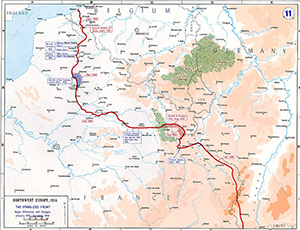
The Western Front at the end of 1914
Around Christmas in 1914, the weather conditions ensured that there was little fighting. The soldiers had to keep themselves busy in the trenches, which sometimes lay very close together.Besides the nerve wrecking guard duties and listening posts, there was also time for fun activities. They played games, performed plays, made music... The fact that the enemies left each other alone when the men went to gather food, went washing in a crater in no man's land, and even when they went to care for the injured or collect the dead, proved that there was some humanity left among them.
About a month after the outbreak of war, Benedict XV was crowned Pope. In early December 1914 he called for an armistice during the Christmas period, or at least on Christmas Eve and Christmas Day. The Pope also hoped for an opportunity for negotiations between the enemies, but the leaders of the nations were not very keen on this armistice, let alone negotiations. The men in the trenches then arranged for an armistice themselves.
On Christmas Eve in that opening year of the Great War, British troops heard chants coming from the German trenches, singing was something they did too (and this of course also applied to the front where French troops were stationed). The enemy was singing Christmas carols and patriotic songs, walking along the trenches with lanterns and putting up Christmas trees that Kaiser Wilhelm II had sent to the front. One thing led to another and after a while the troops were shouting at each other. A report by Private Marmaduke Walkinton of the London Regiment (Queen's Westminster Rifles) shows that a German soldier suddenly shouted that there would be no shooting the next day.
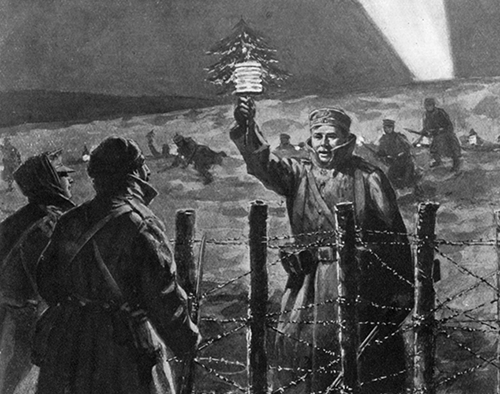
There were also places at the front where the same thing happened in the German lines, lights, songs and Christmas trees, but where fire was opened upon them from the British trench. In some places the Germans didn't let this bother them and simply continued with what they were doing. Every sector was different. You could be in one trench communicating with the enemy, while in the next you could just be shot to pieces.
The next day the troops emerged from the trenches again and walked towards each other in no man's land. They greeted each other and started exchanging gifts, smoke cigarettes together, drink, take pictures, talk about each other's lives, and in some places even a football match was played, although it probably involved some ball kicking here and there instead of a real game. Despite all the joy, there also were moments to bring the dead back to the own lines and bury them, and make repairs to the trenches and dugouts. In some places this even was even the only thing that happened.
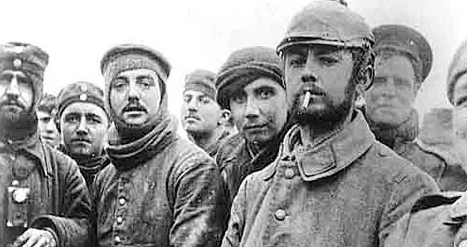
The troops that didn't have a Christmas truce and family at home, must have seen this as an unreal event. The Germans were depicted as bloodthirsty devilish enemies. How could they be so peaceful? The news of the Christmas truce spread like wildfire and people were shown photos of the event and read testimonials about the friendships forged in a day and a half.
But let there be no misunderstanding, as mentioned before, the Christmas truce did not take place along the entire front, many officers were afraid that this would undermine the fighting spirit and authority, and in many places the fighting continued with the necessary casualties on Christmas. In some parts the troops were reluctant to start fraternizing with the men they had been shooting at or who were shooting at them moments before. After Boxing Day, these meetings between enemies stopped again, with the exception of a few rare places where fraternization took place until around New Year's.
The feeling to start shooting at men with whom you had just drunk some wine with, played a game of football with, exchanged stories with... must have been really terrible. That's how hard the war could be. Yet this is a wonderful example of humanity in the trenches, which was unfortunately far too rare.
On both sides there were people, both senior commanders and ordinary soldiers, who did not approve of the armistice. Adolf Hitler, at the time just a courier for the regimental headquarters, is said to have criticized the festive peace: “Such a thing should not happen in wartime, have you no sense of honor?”
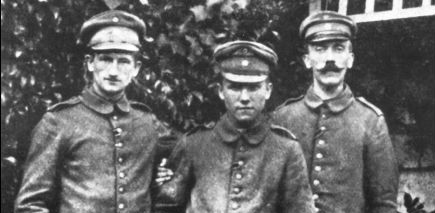
Adolf Hitler on the right
It is not clear on which locations a Christmas truce was held. According to testimonies, the guns were silent at about two-thirds of the 48 km long British front. In the years that followed, everything was done to prevent this from happening again. Fortunately, no one was prosecuted for these Christmas truces, but it is clear that the army leadership was not happy about it. About 100,000 British soldiers likely took part in the Christmas truce.
After the Christmas Truce of 1914, hardly anything similar took place in the following years. The high command prevented this from being possible. Nevertheless, even outside the Christmas period, these ceasefires still took place at the front. 'Live and let live' agreements were also created in quieter parts of the front. These were short breaks to collect the dead and repair the trenches.
Have a Merry Christmas everyone, and take care of each other.
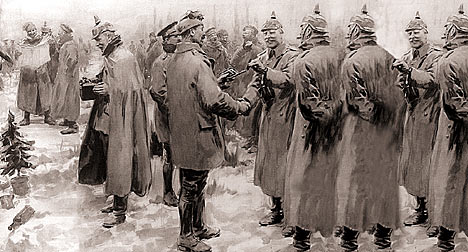
The Christmas Truce memorial in Frelinghien, just across the Belgian border in France
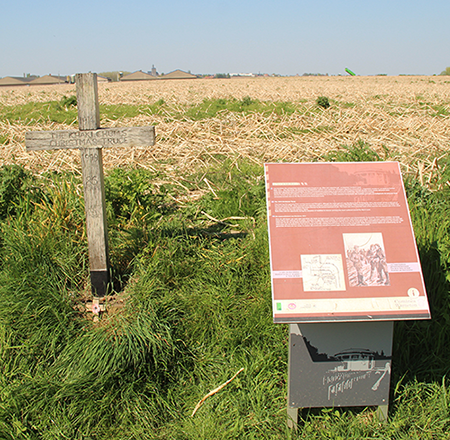
The Christmas Truce memorial of the Khaki Chums in Ploegsteert in Belgium
The new Christmas Truce memorial in Ploegsteert
Sources: iwm.org.uk | britannica.com | cwgc.org